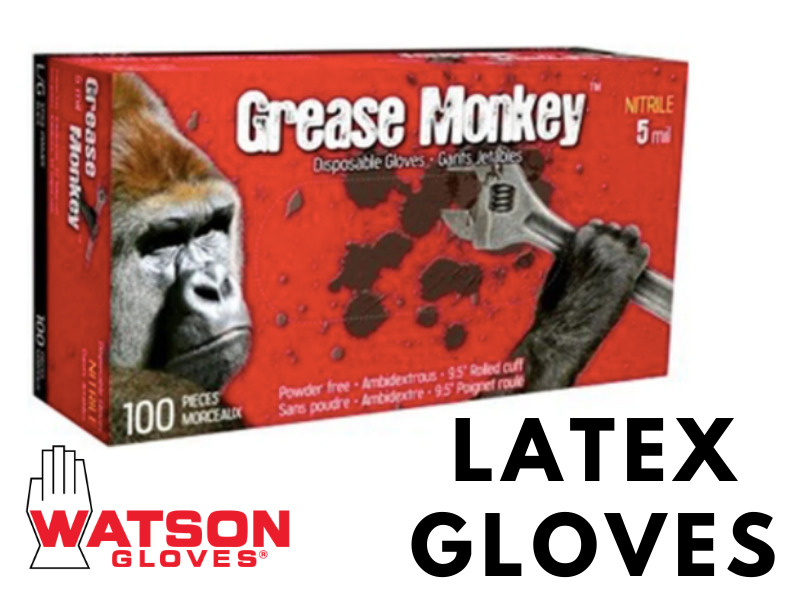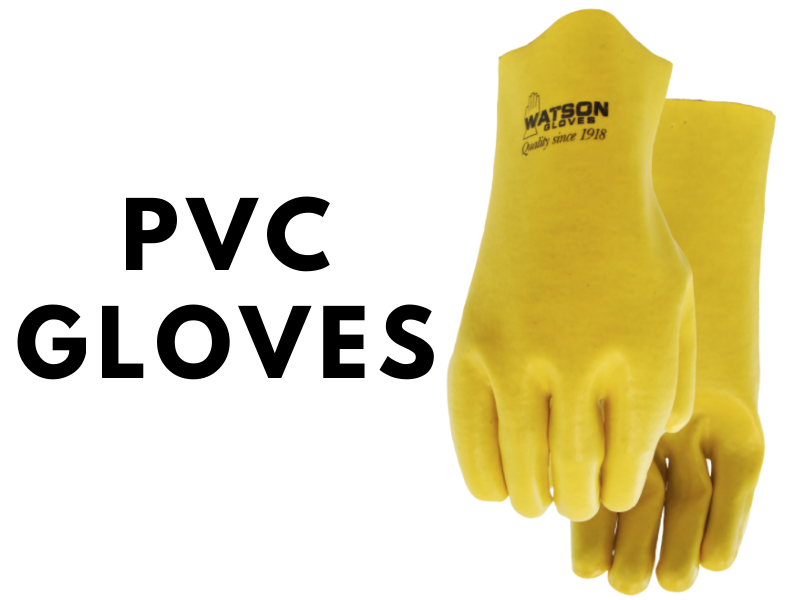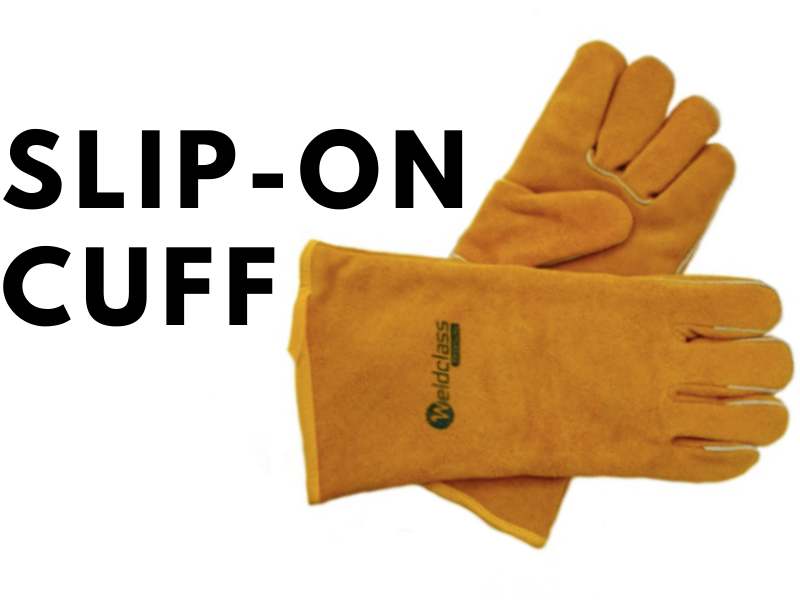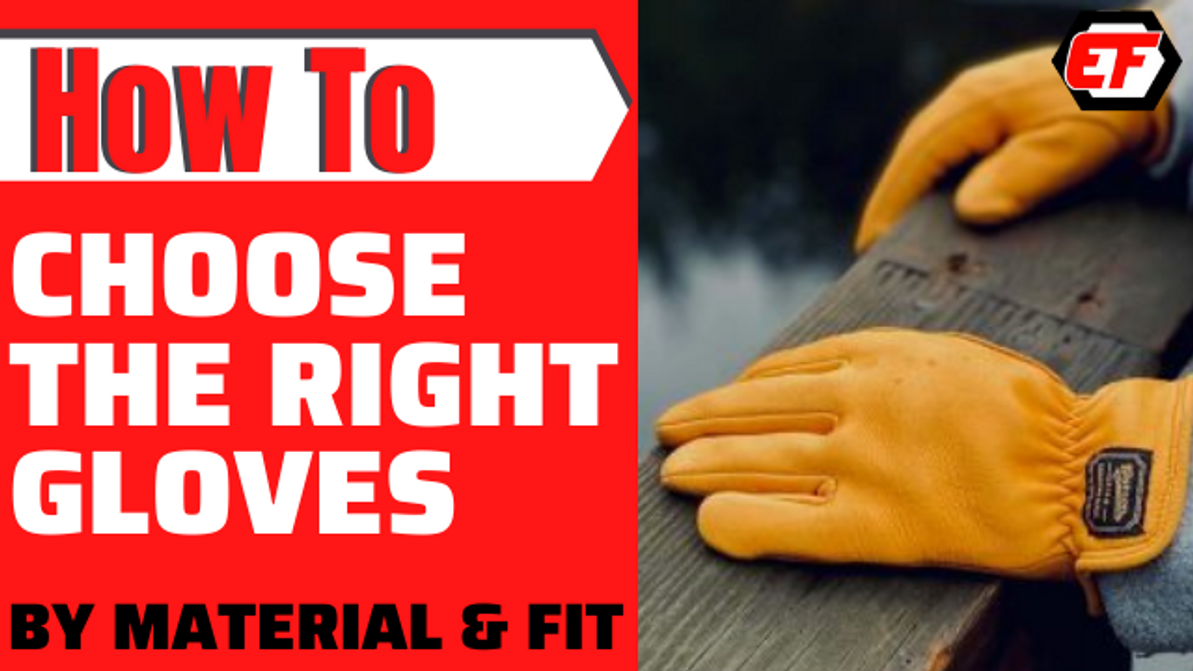How To Choose Safety Gloves
We love healthy hands at Edmonton Fasteners. We’re not a skincare shop (clearly) but we do offer hundreds of products that will protect your hands from being effected by all your hard work. One of the simplest forms of protection from burns, cuts, knicks, chemicals, and more are gloves! We have many brands like Ansell, Bob Dale, Mechanix, Impacto, Milwaukee, Rigid, Superior, and many other reliable names. We’re going to discuss a variety of gloves, materials, their purposes and more. Some call them work gloves, others call them safety gloves, either way - they keep your hands safe while you work.
Material
First we’re going to start with material. If you’ve ever looked at safety gloves, you’ll notice there are thin ones, thick ones, stretchy ones, solid ones, etc. Here are some of the most common safety glove materials and their uses:
Leather

Leather gloves can be made of either cowhide, pigskin, or goat skin. Many people like leather because it is breathable, soft, flexible, and durable. Out of the three types of leather, cow hide is the most common and it is also very protective agains abrasions. Leather gloves are most commonly used for woodworking, landscaping, and outdoor industries.
Canvas
Canvas, a fabric many heavy duty backpacks are made from, is thick, very durable, and resilient against sharp objects. Gloves made from canvas are protective against cuts and even blisters from working too hard. Canvas fabric can also be water resistant.
Latex

Latex gloves are used across a variety of industries, from food, to pharmaceutical, to medical, to automotive, to janitorial, and more. With the pandemic currently happening, more and more people are using latex gloves for everyday uses, such as grocery shopping. This is because latex is one of the most effective forms of protection against bacteria, viruses, and body fluids. Latex is strong, thin, flexible, grippy, and protective against liquids and chemicals. It’s made from rubber trees, and no, they should not be used by someone allergic to latex (even if they don’t ingest the gloves).
Nitrile

Nitrile gloves are often compared to latex gloves. They look very similar and are both a thin, stretchy, disposable type of glove that you see being used in the same purposes as latex gloves. Unlike latex, nitrile is a SYNTHETIC rubber compound. Nitrile is actually stronger than latex against punctures, and it is also features stronger resistance to oils and chemicals than latex.
Polyurethane
Polyurethane provides excellent protection against oils, chemicals, solvents, cuts, abrasions, and more. It provides great grip for the wearer. Polyurethane is usually coated on a fabric glove to provide extra protection. While being more durable than latex and nitrile, it’s still exceptionally flexible and comfortable.
PVC

PVC stands for Polyvinyl Chloride and it’s the world’s third most produced synthetic plastic polymer. PVC provides unyielding grip, even when being used in wet or oily situations.
Cuffs
Do you ever think about cuffs and correlate it with more hand protection? Probably not, but in the world of safety gloves, the proper cuff can prevent a glove wearer from getting hurt. Below we list some of the many options of cuffs you can choose from.
Knit Wrist Cuff

Just like in the name, this cuff is knit and it fits snug around the wrists. As a result of its snug fit, dirt and debris are not able to get in. This type of cuff is found on a variety of gloves, such as leather, cotton gloves, winter gloves, and dipped gloves.
Ranch Cuff or Safety Cuff

This kind of cuff is very common. It offers a loose fit and more ventilation into the glove. It helps prevent hands from getting too hot by allowing more airflow. They’re great for staying on your hands but can easily be taken off when needed.
Slip-On Cuff

Just like the name, it’s a cuff that allows your hand to easily slip into the glove. This cuff has no seam between the glove and the cuff. It’s the perfect type of cuff you need if your job involves frequently taking off your gloves.
Long Cuff (Gauntlet)
Th Gauntlet cuff is very long and loose. It offers extra wrist and forearm protection. They may offer more coverage than all the above cuffs, but with the less snug fit and (most times) no fastener, they’re just as easy to slip off as the “slip-on cuff” shows.
Well - there you have it. Our little guide to choosing gloves based on material and cuff. Please make sure to follow Edmonton Fasteners on Instagram and subscribe to our newsletter. Have a GLOVELY day!
Recent Posts
-
Bissett is Universally Compatible, See Why and How
With Bissett's over 600 fasteners, you're bound to find the perfect fastener for your tool. You …2021 Mar 16th -
How To Choose Safety Gloves
We love healthy hands at Edmonton Fasteners. We’re not a skincare shop (clearly) but we d …2021 Mar 8th -
Three Easy Home Fixes with Gorilla Glue
Gorilla Glue is a household name because of one reason: it works. We carry Gorilla Glue at Edmo …2021 Feb 2nd





